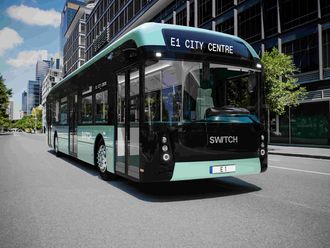
When it comes to positioning your brand, there’s an emerging technology that’s making a massive impact on today’s forward-thinking retailer’s business — digital signage.
Not only does digital signage make it faster, easier and more effective to make an impression on an increasingly demanding marketplace, it also provides information-hungry consumers with the right information at the right time and in the right way without the need to employ additional staff.
Much more than just replacing a billboard with an LCD screen, digital signage brings TV, print, billboards, social media and the store’s web presence together for an integrated, user-friendly and altogether magical in-store experience. Let’s take a look at how a strategic approach to digital signage can benefit the retailer.
Not long ago retail analysts were predicting that online sales would eventually outperform and even see the demise of many brick-and-mortar stores. While online sales have clearly had an impact on the bottom line of many retail stores and forced them to look at alternative ways to entice shoppers into their stores, the value of the in-store experience is still high on the list for most shoppers.
Perhaps nowhere is this truer than in the UAE, where the promise of an out-of-this-world shopping experience has created a niche tourism market that revolves around retail and lures many travellers for that experience alone. So, while online sales continue to grow globally, the in-store experience is more important than ever because consumers have more access to better information and come to a store with more knowledge and higher expectations than they used to.
The key to success is not to go for one approach or another. Smart retailers are opting for an omni-channel approach whereby in-store, online and mobile shopping experiences are aligned with their customers’ shopping and buying preferences. It’s all about creating a consistent — and convenient — brand experience for better top of mind awareness from consumers, leading to greater brand loyalty.
When developing a digital signage strategy as part of an omni-channel approach, the key place to start is to find out what your customers want. How do they want the in-store shopping experience to look and feel and what information do they want ready access to?
The goal is to turn a shopper into a customer and then into a loyal fan who regularly shops with you and tells others about you. It’s about earning their trust, respect and appreciation, and is something that takes time and effort to develop. It’s not about impressing them with a one-off in-store experience.
It’s about doing so every time they walk through the doors and every time they receive an email or a social media message from you. In other words, building a relationship is not a box to be ticked. It’s an ongoing process that must be constantly worked at.
Customers want to feel valued personally. This applies not only to the personalised messages they receive from you online but also to their in-store experience. Digital signage technology has progressed to the extent that it now offers the possibility to personalise what each customer sees when interacting with the signage.
For instance, it is possible to link your digital signage to your customer loyalty programmes enabling a customer to scan their loyalty card and be presented with products and buying options that are unique to them. This makes your customer feel that they are understood and valued.
If you think that this type of technology may not be affordable, just remember that it costs less to build the revenue earning potential from one customer than it does to capture the interest of new customers. What’s more, digital signage can also save you money in staffing costs as it can act like a virtual salesperson on the floor, offering useful information to the consumer without the need for extra staff walking the floor.
The writer is the Executive Director Thought Leaders Middle East.












